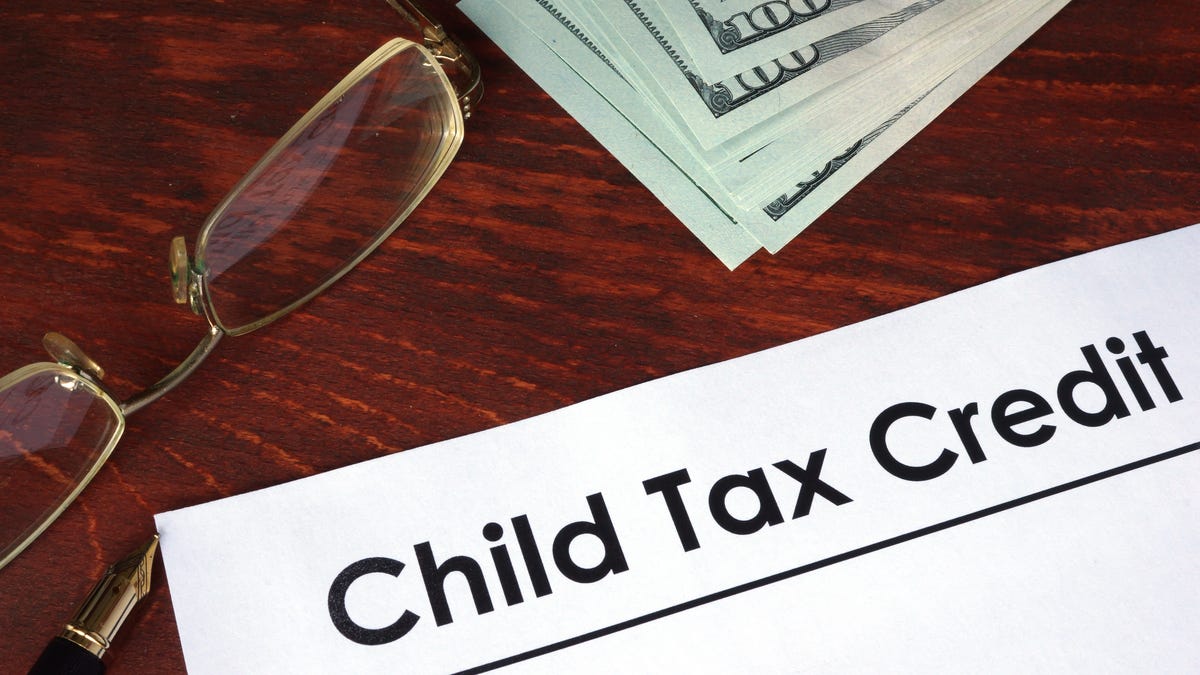Child Tax Credit 2024: Find Out if You're Eligible and How Much Money You Could Get
Tax Day is today, which means you're running out of time to claim your child tax credit money. Here's how the credit works this year.

It's tax time and child tax credit time.
The 2024 Tax season wraps up today, unless you plan to file a tax extension. If you've been waiting for a child tax credit expansion bill to get passed, don't delay any longer. We'll explain what's going and what you should do.
The child tax credit -- both the current credit and the one stalled in the Senate -- is partially refundable, meaning that for a part of the credit, you can get a refund even if you don't owe any tax. The remainder is nonrefundable, so you can use that part of the tax credit only against taxes you owe. But you need to file your tax return to claim it
Find out below why you should file today if you've not already, whether you're eligible for the child tax credit in 2024, and how much money you could get. For more tax tips, here are our picks for the best tax software and when you can expect to receive your child tax credit refund this year.
How much is the 2024 child tax credit?
The maximum tax credit available per kid is $2,000 for each child under 17 on Dec. 31, 2023. Only a portion is refundable this year, up to $1,600 per child.
For tax year 2021, the expanded child tax credit was $3,600 for children five and under, and $3,000 for children ages six to 17. That's no longer the case. The age requirement was also temporarily extended to under 18 on Dec. 31, but that's also gone.
Who is eligible for the child tax credit?
To be eligible for the tax break this year, you and your family must meet these requirements:
- You have a modified adjusted gross income, or MAGI, of $200,000 or less, or $400,000 or less if you're filing jointly.
- The child you're claiming the credit for was under the age of 17on Dec. 31, 2023.
- They have a valid Social Security number.
- They are your legally recognized child, stepchild, foster child, sibling, half-brother or half-sister, or a descendant of one of these categories (like a grandchild or niece or nephew).
- They have contributed no more than half of their own financial support in the relevant tax year.
- They have lived with you for over half the year.
- You are claiming them as a dependent on your tax return.
- You are a US citizen or resident alien.
Go to the IRS website for more information.
If your MAGI is higher than the income limits, the amount of child tax credit you receive will decrease by $50 for every $1,000 above the limit. For example, a MAGI of $210,000 as an individual would allow you to claim $1,500 for each eligible child.
The child tax credit is phased out completely at $240,000 for individuals and $480,000 for married couples filing jointly.
Note: If you search online for information on the child tax credit, you may come across details on the 2021 expanded tax breaks, so double-check that you're viewing the most recent information.
Mark Steber, chief tax information officer at Jackson-Hewitt, says many government sites keep historical information live "for people playing catch-up with their taxes."
Will Congress expand the child tax credit in 2024?
As part of a massive COVID-19 aid package, Congress in 2021 temporarily expanded the child tax credit, which helped drive child poverty to a record low. Congress didn't extend the expanded credit in 2022, and the credit returned to its pre-pandemic rate.
If approved, the new rules around the $2,000 child tax credit would be more modest and cover three tax years: 2023, 2024 and 2025.
As proposed right now, the new child tax credit would continue to be partially refundable (so, for a part of the credit you could get a refund even if you didn't owe any tax) and the new rules would increase the maximum refundable amount per child from $1,600 per child to $1,800 in tax year 2023, to $1,900 in tax year 2024 and to $2,000 in tax year 2025, with the 2024 and 2025 amounts adjusted for inflation.
The remainder of the $2,000 after the refundable amount ($200 for tax year 2023) would be nonrefundable, so you could use the tax credit only against taxes you owe -- after your tax bill hits $0, you won't get additional money.
Should I wait to file my tax return or file now?
Although the proposed child tax credit changes have cleared the House, the Senate won't pass the proposed changes in time for this tax season. If you've been holding off filing your tax return, you should file today or request an extension.
Always consult with your tax advisor for your individual tax needs.
How do I claim the child tax credit?
You can claim the child tax credit by entering your eligible children on your Form 1040 and attaching a completed Schedule 8812, Credits for Qualifying Children and Other Dependents.
What if the credit is more than what I owe in taxes?
The child tax credit this year isn't fully nonrefundable. That means that if your tax liability exceeds what you get from the credit, you forfeit the difference.
You may still be able to claim the additional child tax credit, which refunds up to $1,600 per child. (To see if you qualify for the additional child tax credit, fill out the worksheet for IRS Form 8812.)
If you paid for childcare, you may also qualify for the child and dependent care credit. Depending on your circumstances, you can declare 20% to 35% of your childcare expenses.
The maximum you can claim is $3,000 for one child under 13 or a dependent with disabilities, or $6,000 for two or more.
You are required to have earned income to qualify for this credit and the care for your children must not have been provided by a spouse or family member.
Other federal income tax breaks available to families include adoption credits, education credits and the earned income tax credit.
Is there a state child tax credit?
Yes: 16 states have their own child tax credit this season, including Arizona, California, Colorado, Idaho, Maine, Maryland, Massachusetts, Minnesota, New Jersey, New Mexico, New York, Oklahoma, Oregon, Utah, Vermont and Wisconsin.
Requirements and benefits vary, so check with your state tax portal for details. For more, here's our essential 2024 tax filing cheat sheet and how to track your refund with the IRS.




